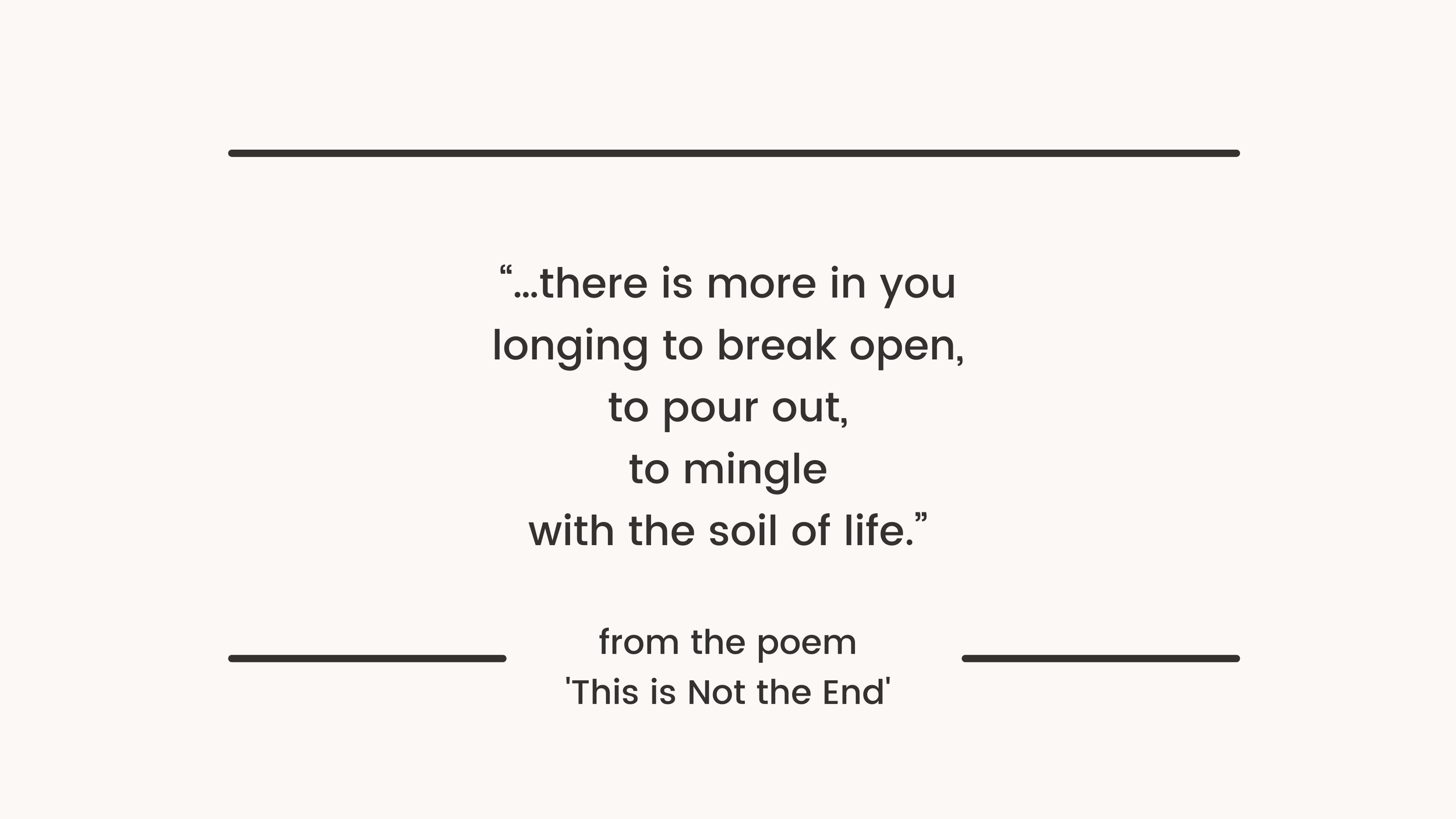James A. Pearson
Following in the grace-filled footsteps of Mary Oliver and David Whyte, James A. Pearson’s poetry invites us to belong into the world, embodying the depths of who we are and learning to listen to the stories of our lives.
In 2014, James A. Pearson moved to Seattle without any true sense of direction.
He got a job, albeit one he describes as “a boring, pay-the-bills sort of job,” and began to settle into the new city. He ventured out to find new restaurants, a new barber, new friends. And again and again he would run into a variation of the same question:
What do you do?
He writes,
Every time someone asked me I felt a stab of shame. I didn’t want to be judged by my boring job. But I also knew there was some deeper part of me longing to be known.
I just didn’t know who that part was. Or how to access it.
He felt a sense of disconnection within himself.
Coming from a background as a social entrepreneur, this new experience of having a “boring job” didn’t fit with his desire to be a change-maker in the world, let alone find belonging in a new city. He found himself firmly in a survival dance when there was a part of him longing for something more sacred.
It was during this season of his life when he came across the words of Bill Plotkin and his book Soulcraft.
“…each of us has a survival dance and a sacred dance, but the survival dance must come first.”
In these words, he found comfort and the space to “accept that maybe it was okay to have ‘just a job’ for a while. Maybe it was okay to focus on my financial stability. Maybe it was okay to prioritize my own okayness in the world.”
There was a permission, already and forever present within him, that offered him the deep exhale of being exactly who he was in that season of his life.
He would later write his poem “Imagine,” which he graciously allowed me to include as the epigraph for my book:
Imagine
if all you had to do
to be beautifulwas to
let the wind dance you
where you standas you grow into
the only shape
you ever had.
Poetry + Teachings
In the last five years of knowing James, I’ve come to see him as a deep and compassionate wisdom teacher.
He brings his whole self to every conversation and listens with a curious honesty that I’ve only experienced on the rarest of occasions with others. There is an energy to his presence that invites you to sit, relax, and hear the permission already within you to settle into what Mary Oliver calls the “soft animal of your body.”
And like Mary Oliver, James uses poetry to invite us into experiencing what it means to be fully human in the midst of a world filled with such beauty and pain.
Below are a couple of my favorite poems from him.
I invite you to settle your body, grab a cup of coffee or tea, and listen for what is waiting to emerge from within you.
“Wintering”
Now the leaves have fallen.
The trees have pulled their aliveness
back in from their branches,
down into their fortress trunks
and the dark, subterranean closeness
of their roots.
Every year they let go of
exactly what everyone says
is most beautiful about them
to save their own lives.
The time will come
when you, too, have to drop
all the ways you’ve made yourself worth loving,
and finally learn how
to sit quietly
right in the center
of your own small life.
Only there can you cry the tears
your life depends on.
Only there will you find
the tiny seed
that holds the whole mystery of you
and cradle it
in the warmth of your body
until the spring.
“Meanwhile”
Meanwhile the world’s still doing spring
like nothing’s happening. There was sunlight
on the forest floor today, and the sounds of birds
welcoming themselves home to another place
they still belong. My fear found no corroboration
in the old growth Douglas firs, who seemed
as steady as ever. Not even the swarms
of little hemlocks clawing towards the light
echoed my alarm. They all just let me be there
with all the hornets buzzing in my chest.
Some mirrors are big enough to show you
how even the end of the world really isn’t.
More from James
The Wilderness That Bears Your Name (book)
“The Survival Dance and the Sacred Dance” (article)
“The Hidden Invitation of Burnout” (article)
More poetry from James (Instagram)
The Wednesday 1-2-3
Teachings, Questions, Resources.
Every Wednesday, I share:
1 contemplative and embodied teaching,
2 introspective questions, and
3 resources to help you get off autopilot and begin engaging in your inner work.
Enter your email and sign up for free right now.
